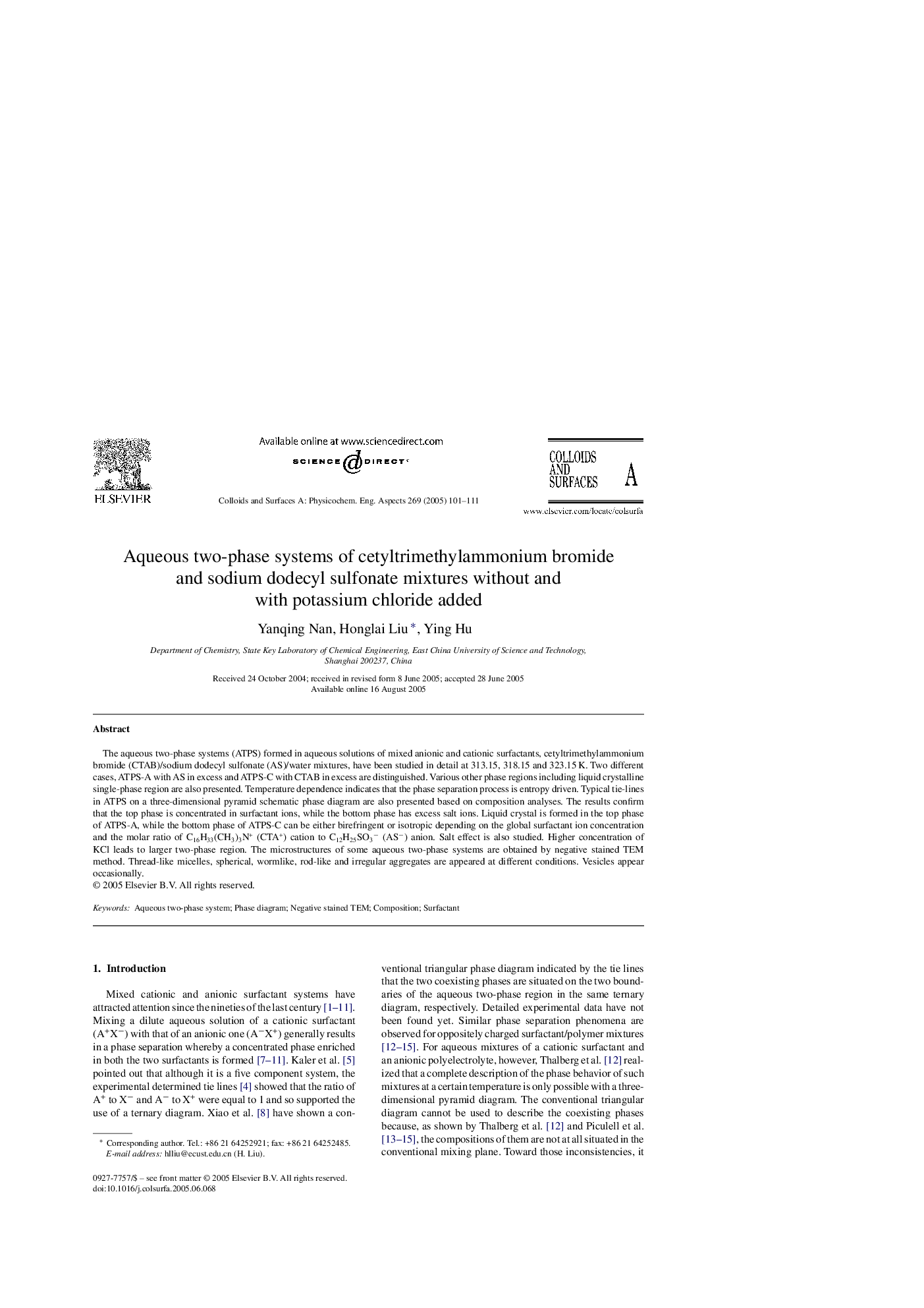| Article ID | Journal | Published Year | Pages | File Type |
|---|---|---|---|---|
| 9675583 | Colloids and Surfaces A: Physicochemical and Engineering Aspects | 2005 | 11 Pages |
Abstract
The aqueous two-phase systems (ATPS) formed in aqueous solutions of mixed anionic and cationic surfactants, cetyltrimethylammonium bromide (CTAB)/sodium dodecyl sulfonate (AS)/water mixtures, have been studied in detail at 313.15, 318.15 and 323.15Â K. Two different cases, ATPS-A with AS in excess and ATPS-C with CTAB in excess are distinguished. Various other phase regions including liquid crystalline single-phase region are also presented. Temperature dependence indicates that the phase separation process is entropy driven. Typical tie-lines in ATPS on a three-dimensional pyramid schematic phase diagram are also presented based on composition analyses. The results confirm that the top phase is concentrated in surfactant ions, while the bottom phase has excess salt ions. Liquid crystal is formed in the top phase of ATPS-A, while the bottom phase of ATPS-C can be either birefringent or isotropic depending on the global surfactant ion concentration and the molar ratio of C16H33(CH3)3N+ (CTA+) cation to C12H25SO3â (ASâ) anion. Salt effect is also studied. Higher concentration of KCl leads to larger two-phase region. The microstructures of some aqueous two-phase systems are obtained by negative stained TEM method. Thread-like micelles, spherical, wormlike, rod-like and irregular aggregates are appeared at different conditions. Vesicles appear occasionally.
Related Topics
Physical Sciences and Engineering
Chemical Engineering
Colloid and Surface Chemistry
Authors
Yanqing Nan, Honglai Liu, Ying Hu,
